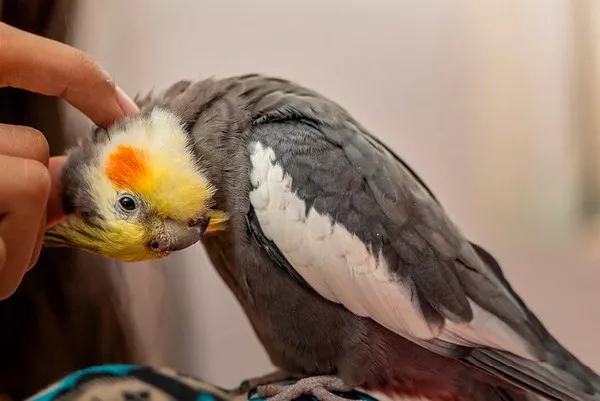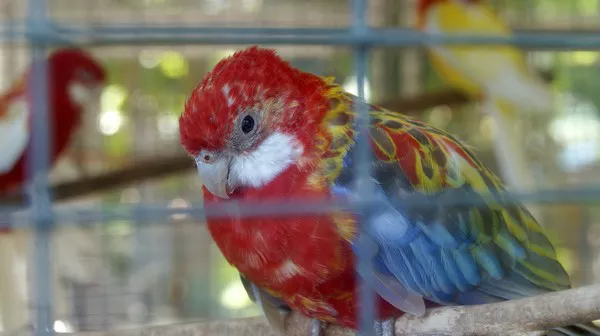Corn snakes (Pantherophis guttatus) are one of the most popular pet snake species due to their friendly temperament, striking appearance, and relatively easy care requirements. If you’re thinking about keeping a corn snake as a pet, it’s important to create an appropriate habitat for it. One of the key factors in ensuring the health and well-being of your corn snake is choosing the right-sized enclosure. In this article, we will explore how big a corn snake’s cage needs to be, why cage size matters, and other considerations to ensure your snake thrives in its environment.
Understanding Corn Snake Behavior and Natural Habitat
Before discussing cage size, it’s essential to understand a corn snake’s natural behavior and habitat. Corn snakes are native to the southeastern United States, where they are often found in a variety of environments, including forests, grasslands, and agricultural fields. They are ground-dwelling snakes but can also climb trees, search for food in crevices, and explore varied terrain.
In the wild, corn snakes typically roam over large areas to hunt small prey like rodents, birds, and eggs. Therefore, when designing an enclosure for a pet corn snake, it’s essential to mimic these natural behaviors by providing enough space for movement, climbing, and hiding.
Factors Affecting Cage Size for a Corn Snake
While the size of your corn snake’s cage is critical, there are a few key factors that determine the exact size of the enclosure you’ll need:
Snake’s Size
As corn snakes grow, their space requirements will increase. Adult corn snakes can range from 3 to 5 feet in length, and some individuals can even grow up to 6 feet. Therefore, your snake’s age and size play a significant role in determining the appropriate cage size.
Behavioral Needs
Corn snakes are relatively docile, but they are also active and curious. They enjoy exploring their environment, climbing, hiding, and sometimes burrowing. A larger cage allows them to move freely, express their natural behaviors, and stay mentally stimulated.
Temperature and Humidity Control
Corn snakes are ectothermic (cold-blooded), meaning they rely on their environment to regulate body temperature. The size of the enclosure must allow for a thermal gradient, which means one side of the cage should be warmer than the other to give the snake a range of temperatures. A larger cage offers more room for these gradients to develop effectively.
Cage Layout and Enrichment
A corn snake’s cage should be more than just a space to sleep and eat; it should be an enriched environment that encourages exercise and mental stimulation. This means you’ll need space for various items such as hides, climbing branches, plants, and water bowls. The size of the cage directly impacts how much enrichment you can provide.
Minimum Cage Size for Corn Snakes
When setting up a cage for a corn snake, it’s important to follow basic guidelines for minimum space. Although larger enclosures are always better, the minimum size will depend on the age and size of your snake.
For Hatchlings (Up to 1 Year Old):
Hatchling corn snakes are typically around 8 to 12 inches in length. During their first year, they do not require a massive enclosure. A suitable cage size for a hatchling is around 20 gallons, or roughly 24 inches long x 12 inches wide x 12 inches tall. This provides enough space for the snake to explore while still being small enough to help monitor temperature and humidity more easily.
For Juveniles (1 to 2 Years Old):
As the snake grows, so should its enclosure. A juvenile corn snake will likely reach lengths between 1.5 to 3 feet, so it will need more space to move around comfortably. A 40-gallon enclosure or 36 inches long x 18 inches wide x 18 inches tall is ideal for this stage. The snake will have more room to stretch out, explore, and climb, and you can add more accessories to enrich its environment.
For Adult Corn Snakes (2+ Years Old):
Adult corn snakes can range from 3 to 6 feet in length. A comfortable adult enclosure should provide enough space for the snake to move freely and comfortably. The minimum cage size for an adult corn snake is usually 75 gallons or 48 inches long x 24 inches wide x 24 inches tall. This will allow the snake to stretch out fully and explore its environment. Larger enclosures are always better, as they allow for the development of temperature gradients and provide additional space for enrichment.
Some experienced snake keepers opt for even larger enclosures, such as 100 gallons or more, which offer ample space for large corn snakes. The extra room enables the snake to have more freedom of movement, increasing overall quality of life.
Why Cage Size Matters
The size of your corn snake’s cage can have a significant impact on its health, well-being, and behavior. Let’s explore why it’s important to choose the right-sized enclosure.
1. Proper Exercise and Exploration
Corn snakes are naturally active and curious creatures. A cage that is too small will limit their ability to exercise, which can lead to obesity, lethargy, and even behavioral issues like stress or aggression. A larger cage provides room for the snake to move around, climb, and explore its environment, allowing it to engage in natural behaviors.
2. Comfort and Stress Reduction
If a corn snake feels cramped, it may become stressed, which can weaken its immune system and lead to health problems. A larger cage can create a more comfortable environment that reduces stress and promotes healthy behavior. It also offers space for the snake to find a hiding spot, which is essential for its sense of security.
3. Temperature and Humidity Control
Corn snakes require specific temperature and humidity levels to thrive. A larger enclosure allows you to establish a thermal gradient by adjusting the heat on one side of the cage and leaving the other side cooler. This gives the snake a choice of where it wants to bask or cool down, which is crucial for its metabolism and digestion.
Additionally, the larger space allows for better control of humidity levels, which is important for shedding and preventing dehydration.
4. Natural Behavior and Enrichment
Corn snakes are opportunistic feeders that actively hunt prey in the wild. While they don’t need to hunt for food in captivity, they still benefit from an enriched environment that mimics their natural habitat. A large cage provides enough room to include climbing structures, hides, and other environmental enrichments that encourage natural behavior like climbing, hiding, and exploring.
How to Set Up a Corn Snake Cage
While cage size is critical, it’s also important to consider how you set up the cage to ensure that your snake remains healthy and comfortable. Here are a few key considerations for setting up a corn snake enclosure:
1. Substrate:
Choose a substrate that’s comfortable and safe for your snake. Aspen bedding, coconut husk, and paper towels are popular choices. Avoid sand or gravel, as these can cause health problems if ingested. The substrate should be deep enough for the snake to burrow, which is a natural behavior.
2. Hides:
Corn snakes need places to hide for security and comfort. Provide at least two hides—one on the warm side and one on the cool side of the cage. This allows the snake to feel safe while regulating its body temperature.
3. Temperature Gradient:
Establish a temperature gradient within the enclosure by using a heat lamp or under-tank heater. The warm side should be between 85°F and 90°F (29°C to 32°C), while the cool side should be around 75°F to 80°F (24°C to 27°C). A digital thermometer is essential for monitoring temperatures.
4. Humidity:
Corn snakes require moderate humidity, around 40% to 60%. This can be achieved through proper ventilation and misting the cage occasionally. Providing a water dish large enough for the snake to soak in can also help maintain proper humidity levels.
5. Enrichment:
To make the cage more interesting and engaging, you can add climbing branches, plants, or artificial rocks. These enrichments allow the snake to explore, climb, and feel more at home in its environment.
6. Lighting:
While corn snakes do not need special UVB lighting, they benefit from a regular light/dark cycle. Provide 12 to 14 hours of light during the day and ensure the cage is dark at night. This helps maintain their natural circadian rhythm.
Conclusion
Choosing the right cage size for your corn snake is essential for its health and happiness. While hatchlings can start in a smaller enclosure, it’s important to upgrade the cage as your snake grows. A good rule of thumb is to provide an enclosure that is long enough to allow your snake to stretch out fully, with enough space for enrichment, hiding spots, and proper temperature gradients. By choosing the appropriate size and setting up the cage correctly, you’ll ensure your corn snake lives a long, healthy, and stress-free life in its new home.
Related Topics:
























